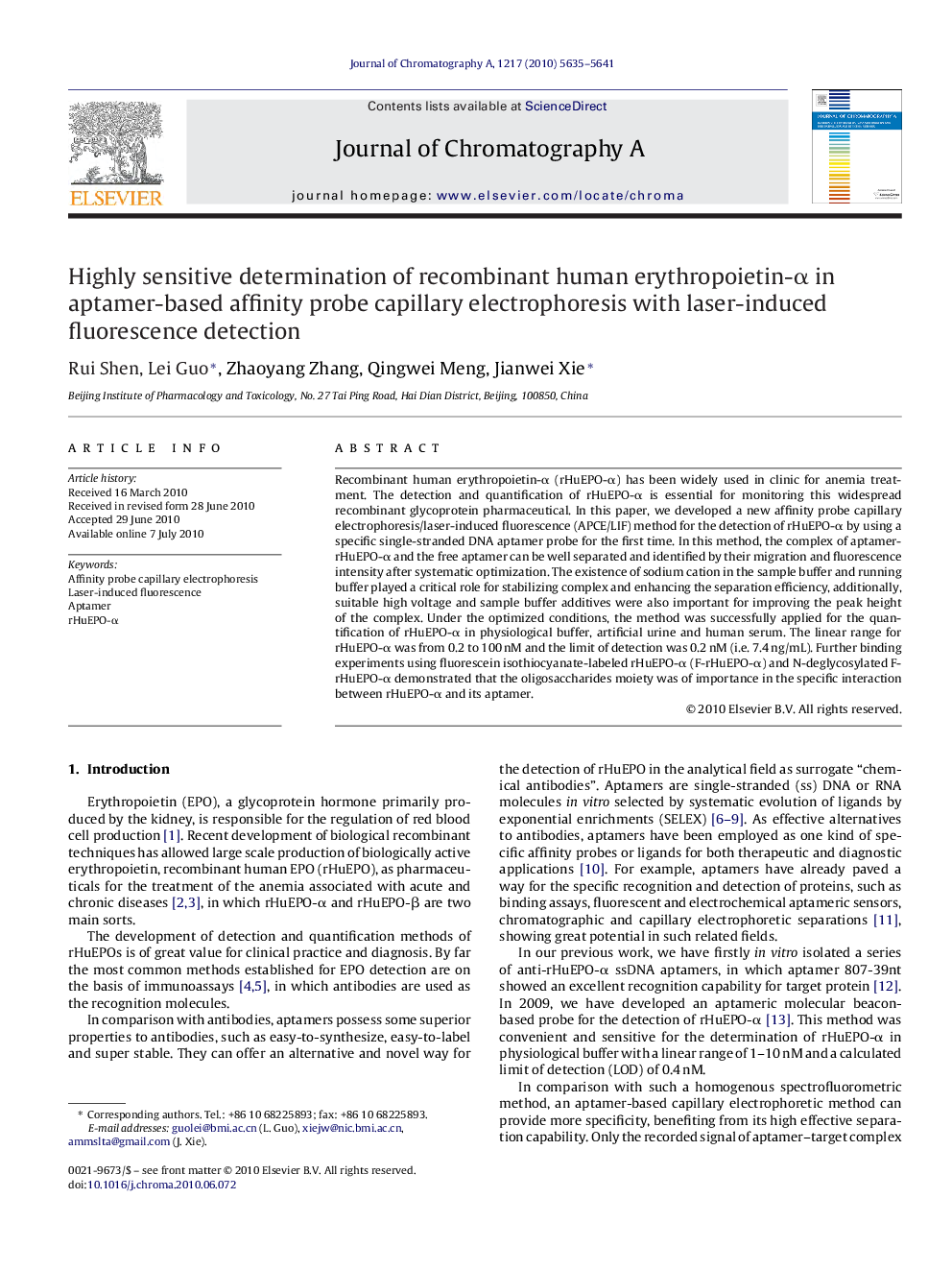| Article ID | Journal | Published Year | Pages | File Type |
|---|---|---|---|---|
| 1204705 | Journal of Chromatography A | 2010 | 7 Pages |
Recombinant human erythropoietin-α (rHuEPO-α) has been widely used in clinic for anemia treatment. The detection and quantification of rHuEPO-α is essential for monitoring this widespread recombinant glycoprotein pharmaceutical. In this paper, we developed a new affinity probe capillary electrophoresis/laser-induced fluorescence (APCE/LIF) method for the detection of rHuEPO-α by using a specific single-stranded DNA aptamer probe for the first time. In this method, the complex of aptamer-rHuEPO-α and the free aptamer can be well separated and identified by their migration and fluorescence intensity after systematic optimization. The existence of sodium cation in the sample buffer and running buffer played a critical role for stabilizing complex and enhancing the separation efficiency, additionally, suitable high voltage and sample buffer additives were also important for improving the peak height of the complex. Under the optimized conditions, the method was successfully applied for the quantification of rHuEPO-α in physiological buffer, artificial urine and human serum. The linear range for rHuEPO-α was from 0.2 to 100 nM and the limit of detection was 0.2 nM (i.e. 7.4 ng/mL). Further binding experiments using fluorescein isothiocyanate-labeled rHuEPO-α (F-rHuEPO-α) and N-deglycosylated F-rHuEPO-α demonstrated that the oligosaccharides moiety was of importance in the specific interaction between rHuEPO-α and its aptamer.
